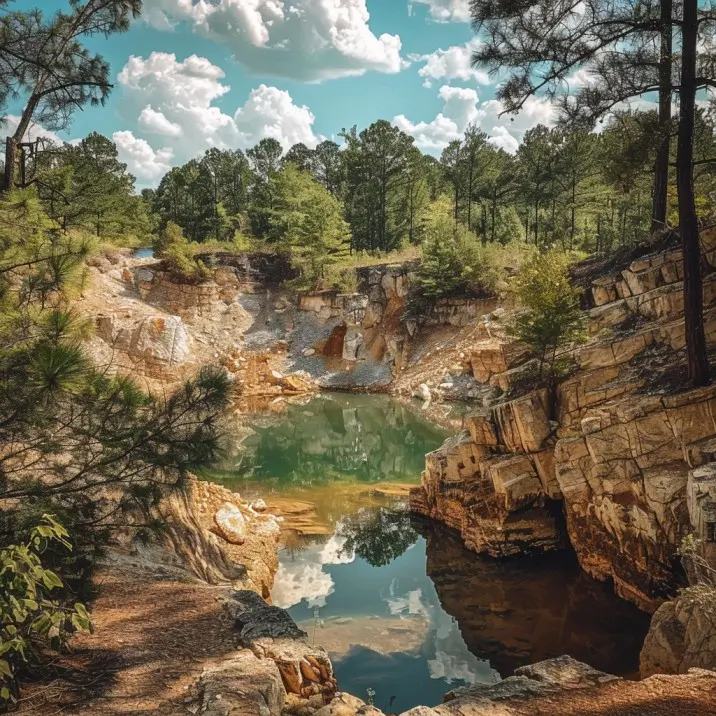Crater of Diamonds State Park, located in Arkansas, experiences varying rainfall amounts throughout the year. On average, the park receives 93.1 mm (3.66 inches) of precipitation per month. However, the rainfall can fluctuate significantly from year to year, with some winters seeing over 20 inches of rain and others just 24 inches over a longer period.
Rainfall Breakdown by Month
Let’s take a closer look at the monthly rainfall data for Crater of Diamonds State Park:
January
The park typically receives 81.5 mm (3.21 inches) of rainfall in January, with an average high temperature of 13 °C (55 °F) and a low of 2 °C (36 °F).
February
Rainfall in February averages 102.5 mm (4.04 inches), with highs of 15 °C (59 °F) and lows of 4 °C (39 °F).
March
The park experiences an average of 102.3 mm (4.03 inches) of rainfall in March, with highs of 20 °C (68 °F) and lows of 8 °C (46 °F).
April
Rainfall in April averages 97.9 mm (3.86 inches), with highs of 24 °C (75 °F) and lows of 12 °C (54 °F).
May
The park typically receives 114.9 mm (4.52 inches) of rainfall in May, with highs of 28 °C (82 °F) and lows of 17 °C (63 °F).
June
Rainfall in June averages 82.0 mm (3.23 inches), with highs of 32 °C (90 °F) and lows of 21 °C (70 °F).
July
The park experiences an average of 80.2 mm (3.16 inches) of rainfall in July, with highs of 34 °C (93 °F) and lows of 23 °C (73 °F).
August
Rainfall in August averages 70.3 mm (2.77 inches), with highs of 34 °C (93 °F) and lows of 22 °C (72 °F).
September
The park typically receives 83.1 mm (3.27 inches) of rainfall in September, with highs of 31 °C (88 °F) and lows of 19 °C (66 °F).
October
Rainfall in October averages 103.7 mm (4.08 inches), with highs of 25 °C (77 °F) and lows of 13 °C (55 °F).
November
The park experiences an average of 92.7 mm (3.65 inches) of rainfall in November, with highs of 19 °C (66 °F) and lows of 7 °C (45 °F).
December
Rainfall in December averages 106.3 mm (4.19 inches), with highs of 14 °C (57 °F) and lows of 3 °C (37 °F).
It’s important to note that these figures are based on historical data, and actual rainfall amounts may vary from year to year. Additionally, the park’s proximity to Texarkana Regional-Webb Field can cause slight variations in the actual climate and weather conditions.
References

